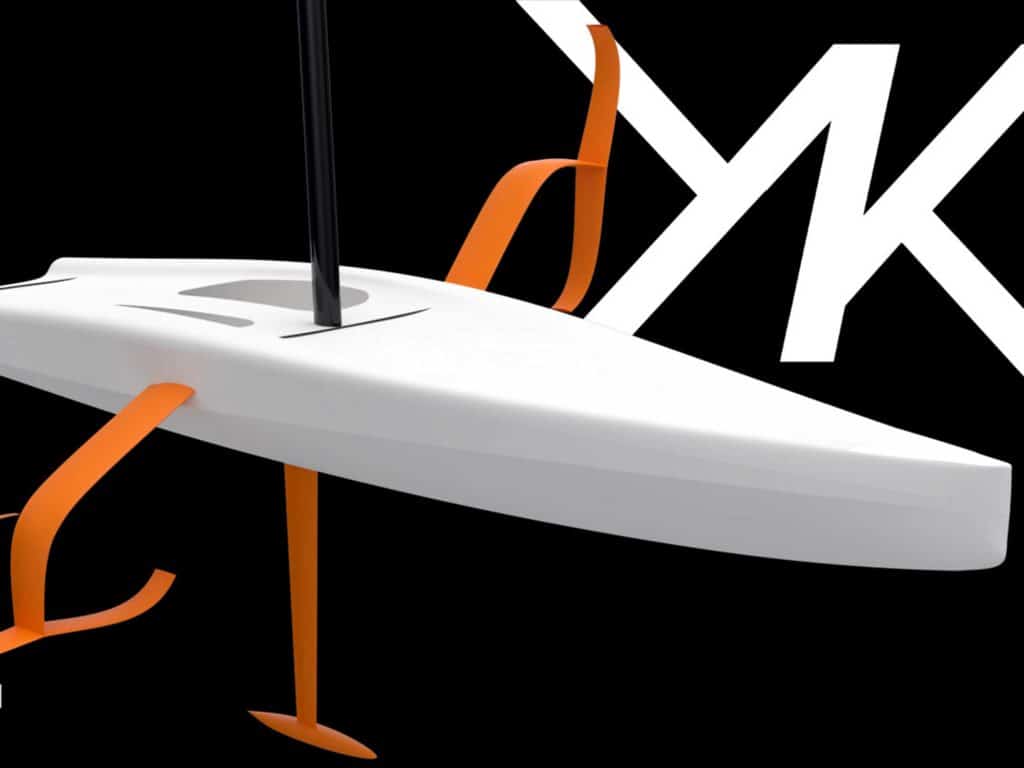
The vision of repeat client Roberto Lacorte is to be the first to have a Mini-Maxi sized foiler capable of coastal racing and to bring true big-boat foiling performance to a wider audience. This will take the lessons and some of the technology from the America’s Cup AC75 foiling monohull and put them together in a more user friendly and cost-effective package which can sail in a wider range of conditions.
Given the very challenging design brief, we have assembled a team of specialists to ensure we can deliver Roberto’s vision. Among the 10-man group are members with experience from three of the four AC teams currently competing in Auckland. Our R&D Partners, KND, provide the analytical tools and expertise to evaluate the novel design topography, with aero input from North Sails design specialists, while Pure Engineering provides their relentless drive and technical knowledge to produce the lightest and most reliable platform.
The initial six months of preliminary design work has been focused on validating the concept, using the TNZ-developed Gomboc dynamic simulator and the North Sails VPP to evaluate various configurations and foil geometries both when flying and in displacement mode. Led by founder Gio Belgrano, Pure have developed an entirely new wing articulation solution to reduce foil cost and improve reliability appropriate to a project operating outside the rarefied conditions of the America’s Cup.
Our vision for the design is a robust simple platform able to foil in winds below 10 knots true, and capable of passing the various requirements for entry into mainstream race events, such as World Sailing Offshore Special Regulations categorization, including stability. The need for limited Archimedean sailing in sub-optimal wind speeds and increased contact with the sea surface in a wave pattern leads to a hull shape differentiated from its AC75 siblings by greater concern for wetted surface. Powered controls and winches assisted by a flight augmentation system reduce the burdens on the five-man crew, allowing the helm to focus on steering without also having to directly control ride height.
“It will be a different boat, the first of a new generation that will definitely set sail in the coming years. We are the first, with the pros and cons of the case, but my professional and sporting life has always been marked by innovation and the desire to explore, so I could only take this,” Lacorte says. “We have been working on the project for a long time, with Mark Mills and the professionals with whom I have shared many victories with SuperNikka and the Persico 69F circuit. Now we know which path to take precisely and we are ready. I can count on an exceptional group, which is making a fundamental contribution to the realization of FlyingNikka. And it is the most important aspect, when you embark on an undertaking like this, outside the comfort zone, which might even seem a bit crazy.”
Now that the project is moving at full speed, the design team is focusing on development and optimization of the design geometry and systems. Over the next three months the hull, deck, and crew configuration will be finalized prior to the commencement of construction. Builder selection is at an advanced stage, guided by experienced Project Manager, Micky Costa who fills a crucial role linking the designers, builder, and sailing team to produce a reliable, simple and effective sailing machine. Stand by for updates as the project progresses toward flying over the Mediterranean in 2022.









